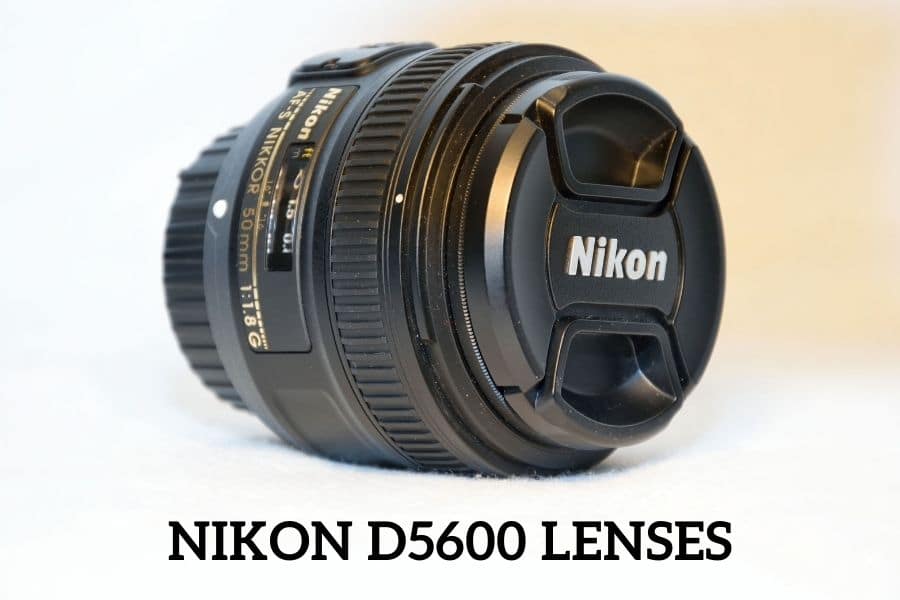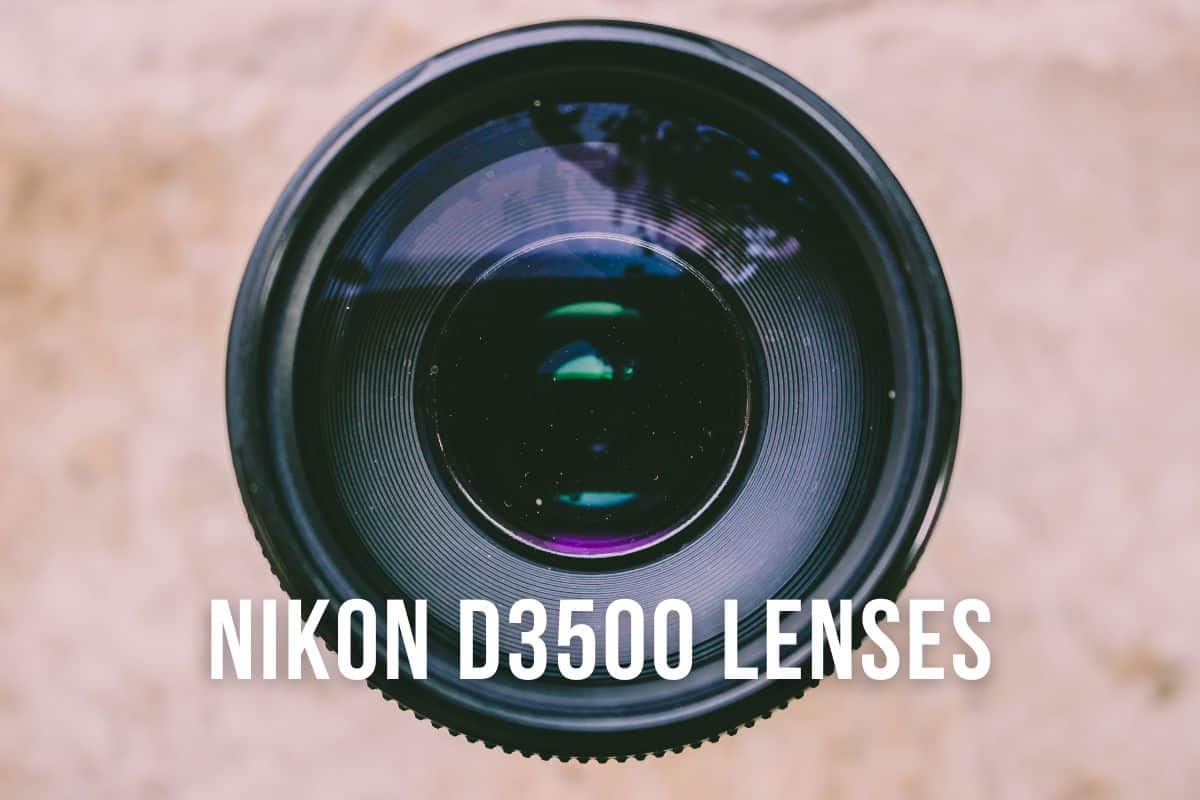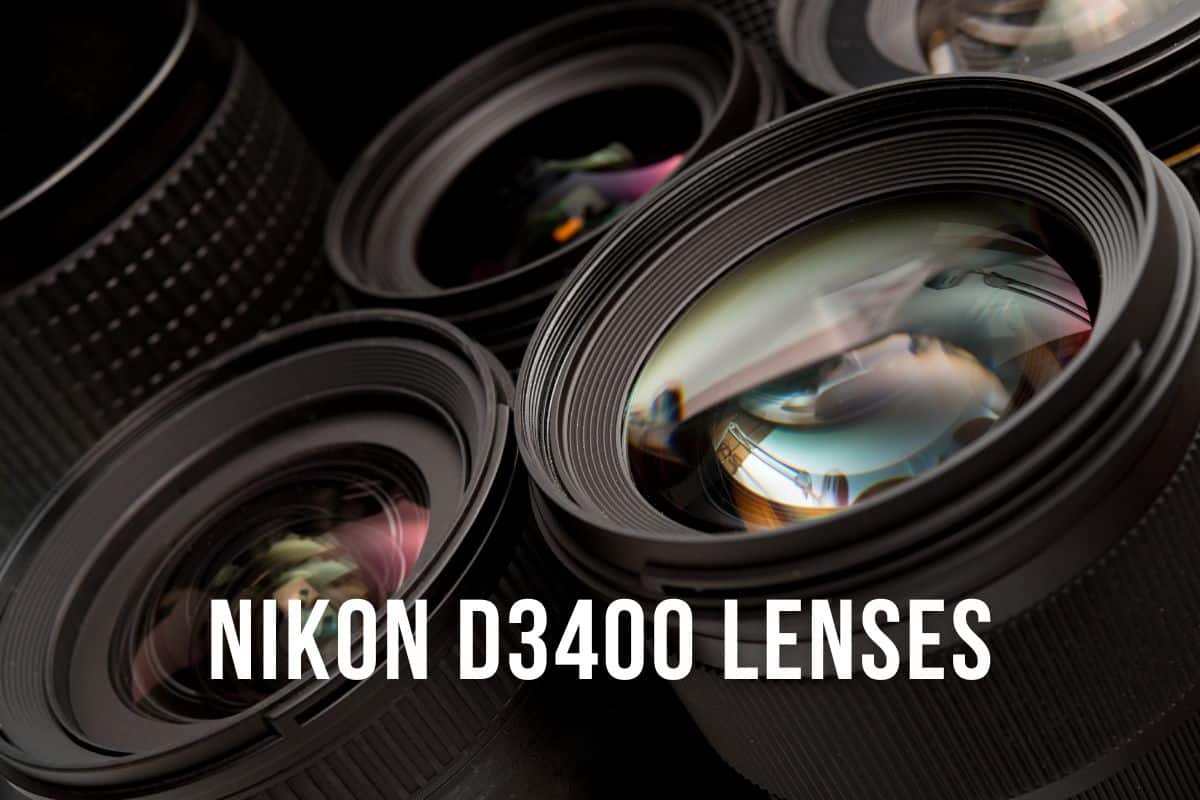Nikon D5600 is one of the most popular cameras for beginners and hobby photographers. An entry-level camera with many benefits is why it’s picked as the first camera year after year. As it has interchangeable lenses, you will have many options to try out different forms of photography.
But what are the best lenses for Nikon D5600? Well, foremost, it depends on what you want to photoshoot. Some like portraits, others for example wildlife. For both occasions, there are different alternatives to choose from. In this post, we will look through different lenses for your camera.
Read more: How to Choose a Camera Lens That Fits Your Needs.
Disclosure: This article features affiliate links, including Amazon.com. If you decide to buy through one of these links, I’ll earn a small commission at no extra expense to you. For more details, please see my disclosure policy.
Below is a list of lenses for your Nikon DX camera, including their usage, specifications, and price range. The prices are categorized as follows:
- 0 – 400$ – Budget $
- 401 – 700$ – Average $$
- 700+ $ – Expert $$$
wide angle lenses
1. Sigma 18-35mm F1.8 Art DC HSM
PROS
- A large aperture for a zoom
- Affordable pro-grade gear
- It can be used in various photoshoots
CONS
- A bit heavy
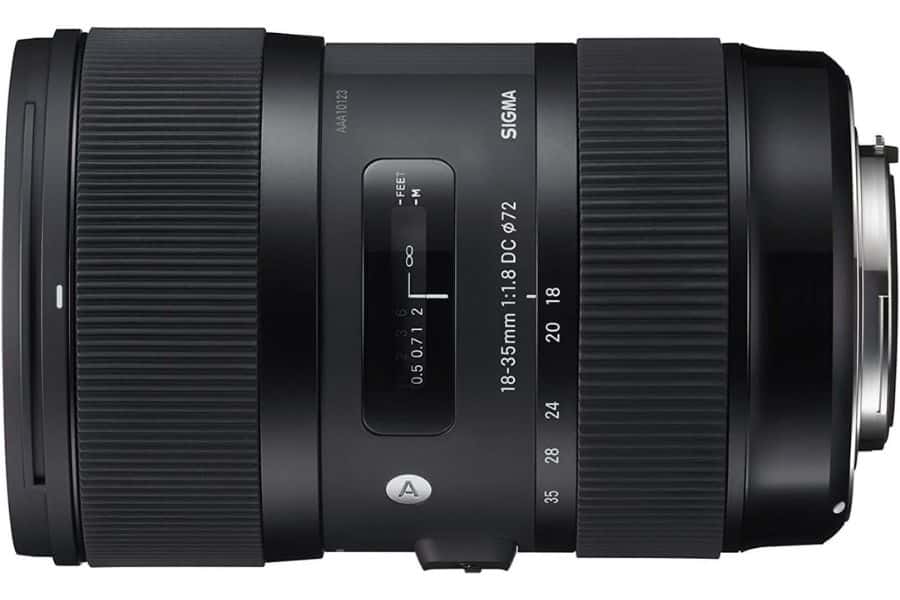
Price: Expert $$$
Best feature: Large aperture for a zoom
Dimensions: 78 x 121mm / 3.1 x 4.8in.
Weight: 810g / 28.6 oz.
Sigma lens from the ART series is something for professionals or those who want to take photography more seriously. You can already see the difference in the price as it’s a bit more expensive than others for an entry-level camera. However, it doesn’t mean it isn’t worth an investment, as it’s a superb wide-angle lens.
The main feature of why this lens is often selected is its extremely wide aperture. A zoom lens with an aperture of f/1.8 is more likely a rarity in the camera world. With that feature, it performs very well in low light conditions both inside and outside.
As it’s a wide-angle zoom lens with a large aperture, it’s great in various photographic shootings. An ideal for landscape, portrait, and close-up photography.
A silent and fast autofocus is also provided with a hypersonic motor.
In terms of quality and specification, it’s an affordable pro-grade lens. Alternatives with the same features are almost double as expensive as this Sigma lens.
2. Nikon AF-P DX 10-20mm f/4.5-5.6G VR
PROS
- Ultra wide-angle
- Fits everywhere as it’s small-sized
- Very affordable
CONS
- Aperture’s not the greatest for indoor photography
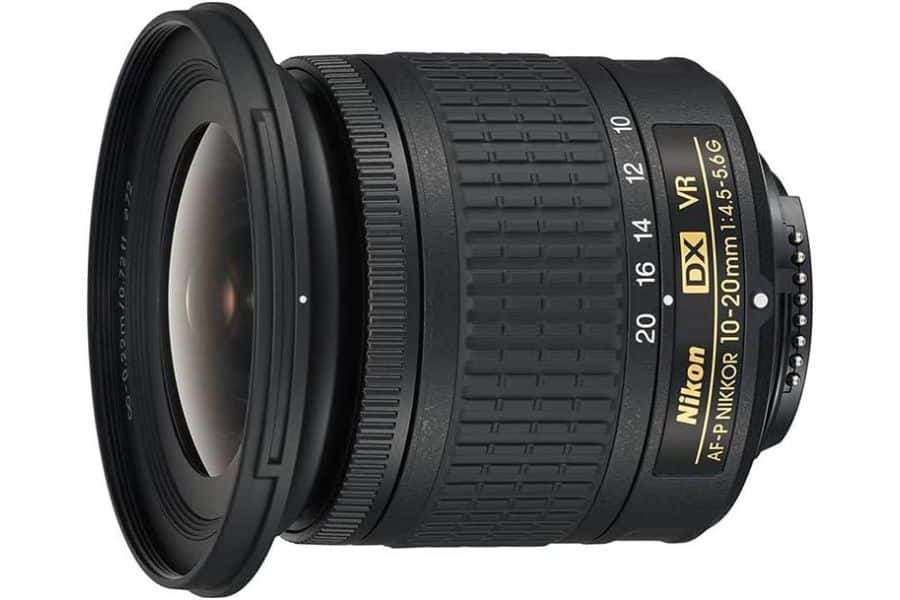
Price: Budget $
Best feature: Ultra wide angle
Dimensions: 77 x 73mm / 3.0 x 2.9in.
Weight: 230g / 8.2oz.
This might be for you if you are looking for a sharp ultra-wide lens with a fraction of the money. A small and lightweight Nikon lens is an excellent addition to your camera gear to try out new compositions and capture different perspectives.
With a weight of 230 grams (8.2 oz) and a length of 73mm (2.9in.), it’s an excellent lens to carry around anywhere you go. It doesn’t take up much space in your camera bag.
Every photographer would benefit from features like autofocus and built-in vibration reduction. With these, you will get lovely, sharp photos without spending much time adjusting camera settings to get the best out in different conditions.
It’s excellent at outdoor photography and would add to camera gear while traveling or hiking. As it’s ultra wide angle, it captures landscapes and city silhouettes very well.
It only costs a fraction of money, and you will get an excellent tool with many benefits.
Telephoto Zoom lens
3. Sigma 150-600mm 5-6.3 Contemporary DG OS HSM
PROS
- Compact and lightweight
- Great features like HSM and OS
- The telephoto lens on a budget
CONS
- Could do better above 500mm, but still doing a good job
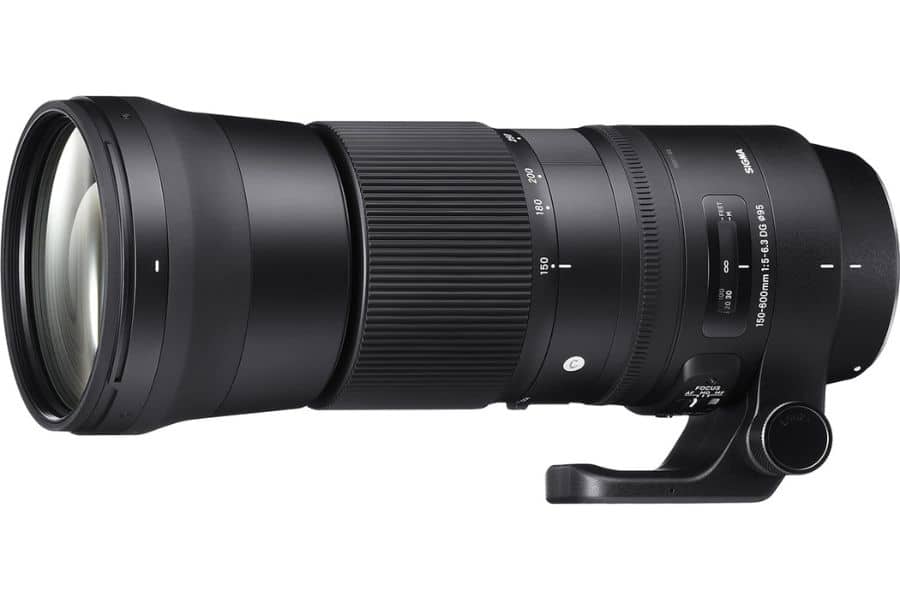
Price: Expert $$$
Best feature: Light and compact for telephoto lens
Dimensions: 260 x 105mm / 10.2 x 4.1in.
Weight: 1,930g / 68.1oz.
Telephoto lenses are made especially for photographers who spend their time outdoors shooting objects from a distance. This can be mostly wildlife or sports photography.
This zoom lens comes under Sigma, and its strengths are its compact design and reasonable price for high-end photography gear. If you are more interested in wildlife photography, that will certainly level up your game multiple times without breaking the bank.
Features like up to 600mm focal length range, hypersonic motor (HSM), autofocus (AF), and built-in optical stabilization (OS) are essential for telephoto zoom lenses. You will get all these from this superb Sigma camera gear.
The weight is 2 kg (4.41 lbs), which is pretty light for big telephoto lenses. Other competitors can weigh up to 3 kg (6.61 lbs). So, that option would be more reasonable when you need to take quick shots while holding a hand-held camera.
You will get tons of features to shoot perfect wildlife photos for a very affordable price for the pro-grade lens.
Portrait Lenses
4. Nikon AF-S Nikkor 50mm f/1.8G
PROS
- Small and compact design
- Affordable price
- Great autofocus
CONS
- Visual distortion
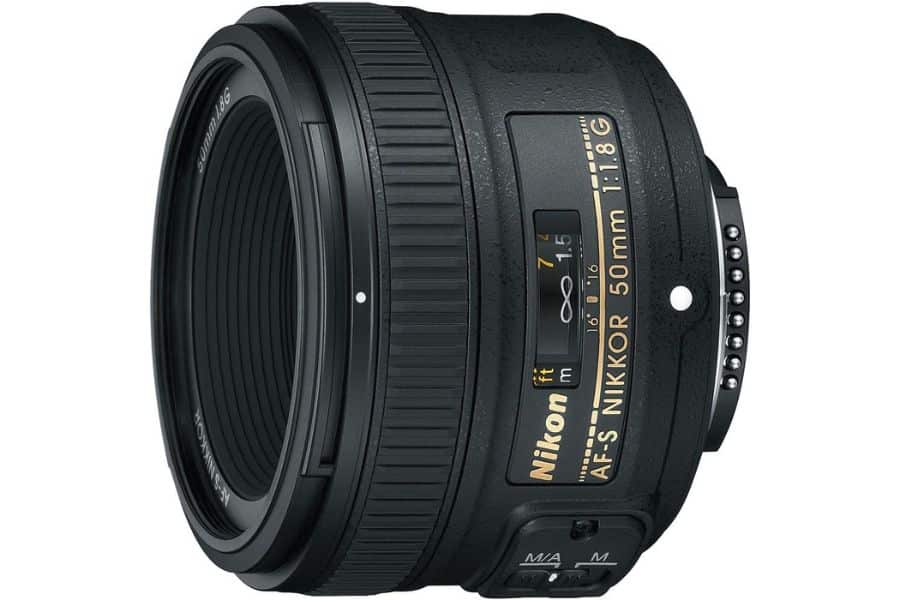
Price: Budget $
Best feature: Shallow depth of field
Dimensions: 72 x 52.5mm / 2.8 x 2.1in.
Weight: 185g / 6.6oz
With a 50mm focal length and a maximum aperture range of f/1.8, it’s already a great deal for a fraction of money.
This portrait lens performs well under low light situations and gets you a shallow depth of field and a soft bokeh. These great features will level up your game in portrait photography.
A compact and light Nikon portrait lens makes shooting hand-held in any condition easy. Also, it fits easily in a camera bag without the need to unmount the lens. It would be an ideal lens for portraits, weddings, and events.
Built-in autofocus motor (AF-S) delivers excellent quality, producing sharp images. It’s a great addition to a DSLR camera.
Additionally, it features a large aperture that produces soft, shallow backgrounds in your portraits.
It offers much more quality than you would assume from a budget lens. If you don’t want to spend much, it’s perfect for your portraits.
5. Nikon AF-S NIKKOR 85mm f/1.8G
PROS
- Soft background with f/1.8
- Very cheap for an 85mm prime lens
- Focus modes
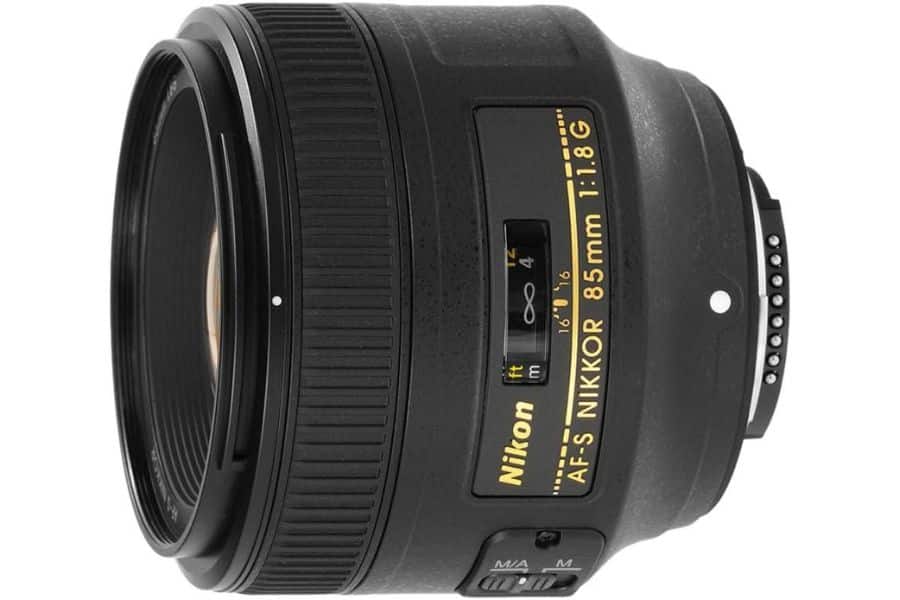
Price: Budget $
Best feature: Soft background
Dimensions: 80 x 73mm / 3.1 x 2.9in.
Weight: 350g / 12.4oz
There is a big discussion about which is the best lens for portraits. Is it a 35mm, 50mm, or 85mm lens? This 85mm budget Nikon lens will surely give you some other spark with shorter focal lengths.
It is similar to the prime lens mentioned above (50mm) but has one significant difference: a focal length. The 85mm lens is something that some photographers say is the best focal length for portraits.
They say that mainly because it gives you a very soft background. An aperture of f/1.8 makes it an excellent choice as a budget option. Also, two focus modes M/A and M (manual priority autofocus and manual focus respectively) will give you some room to play with a focus on different conditions.
Overall, it’s a bit more expensive and heavier than the mentioned 50mm above, but still, that might be an even better option for you. You will see the difference, especially in portrait compositions with a soft and creamy background. If you need to choose between 50mm and 85mm and your main specialty is to shoot portraits, then I would choose 85mm.
Travel lenses
6. Nikon 18-200mm f/3.5-5.6g ed vr II
PROS
- All-in-one lightweight lens
- Built-in image stabilization
- Good aperture for zoom
CONS
- It doesn’t perform excellently on long-range focal lengths
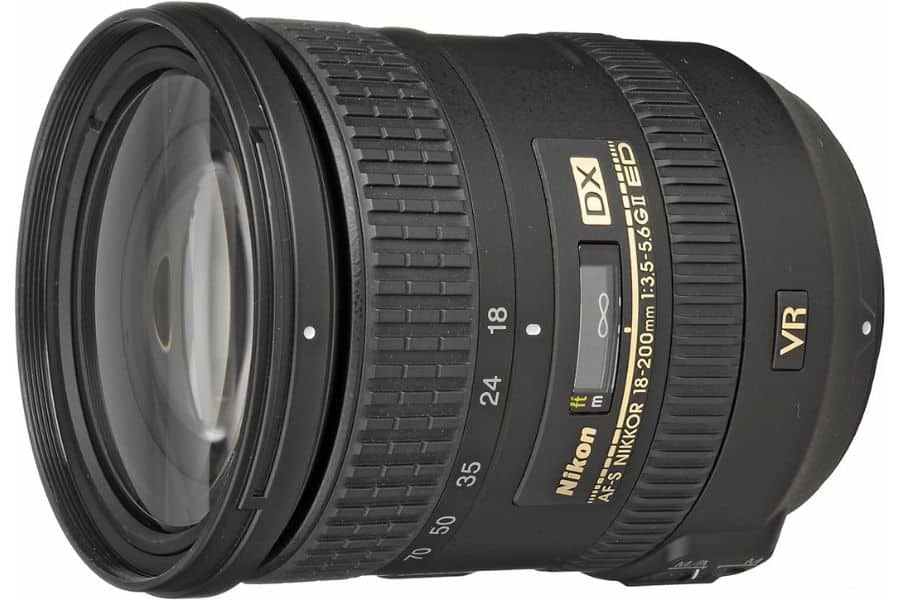
Price: Average $$
Best feature: Great aperture for a zoom
Dimensions: 77 x 96.5mm / 3.0 x 3.8in
Weight: 565 g / 19.9oz.
A lightweight and affordable Nikon lens is one of the best options for travel as it has a wide focal length range. From 18mm to 200mm, it will do close-range city photography, landscapes, and even a bit of wildlife.
It’s pretty light for a superzoom, and it’s one of the main benefits when you want your travel gear to be as light as possible. That all-in-one lens is super helpful as it covers a variety of focal lengths. That could be the only one you need for travel adventures.
Image stabilization is another thing that is essential for any lens. With that feature, you will be able to shoot hand-held without the need to worry about blurred photos. A silent wave motor is also good to have.
Overall, it’s a consumer-level lens that offers various options for shooting different perspectives. It’s not a high level, so it doesn’t perform excellently in any focal lengths. However, for this price, you will get loads of benefits that you need for an entry-level Nikon camera.
7. Sigma 17-50mm f/2.8 EX DC OS HSM
PROS
- A large aperture for a zoom
- Multilayer coating
- Super affordable price
CONS
- A bit heavy, but nothing serious
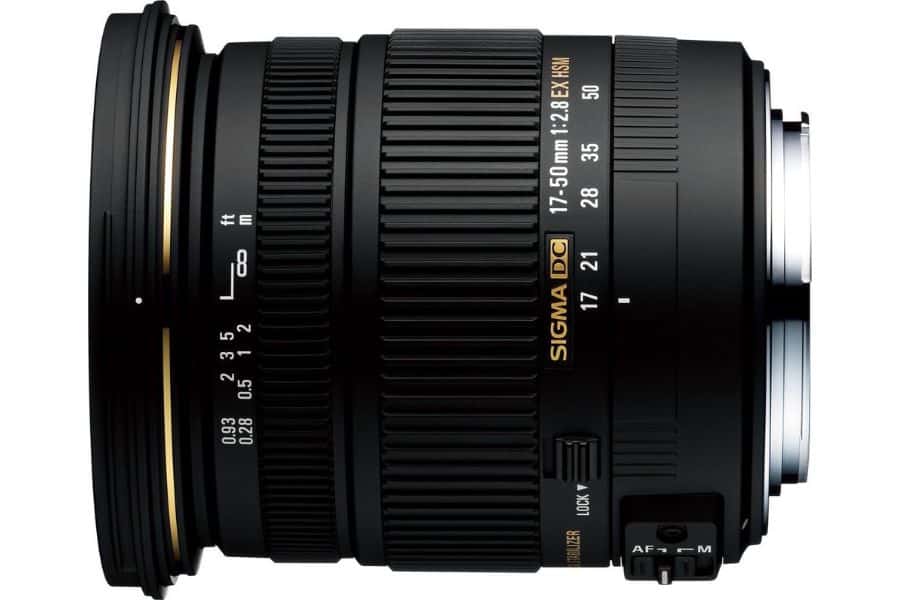
Price: Budget $
Best feature: Optical stabilization
Dimensions: 83.5 x 91.8 mm / 3.29 x 3.61 in.
Weight: 565g / 19.9oz.
The quality and features you will get for a budget are magnificent. A zoom lens with a large aperture is heaven for any photographer who likes to shoot various things from close range to zoom out far away objects.
An aperture of f/2.8 is one of the main key features. You can use it for street photography and landscape and even get lovely portrait photos with blurred backgrounds. With a wide aperture, it performs better than competitors with low light conditions.
It can also handle high exposure. The multilayer coating is a bonus during sunny days. With an additional screen layer, you don’t have to worry about getting overexposed images.
Another game-changing feature of this Sigma lens is optical stabilization. With that, you will get sharp photos without using a tripod. It comes in handy when traveling and wanting to take photos on the way.
Overall, this is one of the best deals for your Nikon camera. A zoom lens with a large aperture is a great partner for shooting your travel adventures. If you need to choose one lens without robbing much space in a bag, then it’s for you.
8. Nikon AF-S DX NIKKOR 18-105mm f/3.5-5.6G ED VR
PROS
- A very affordable all-in-one lens
- Lightweight for traveling
- Great focusing
CONS
- Distortion at a low focal length
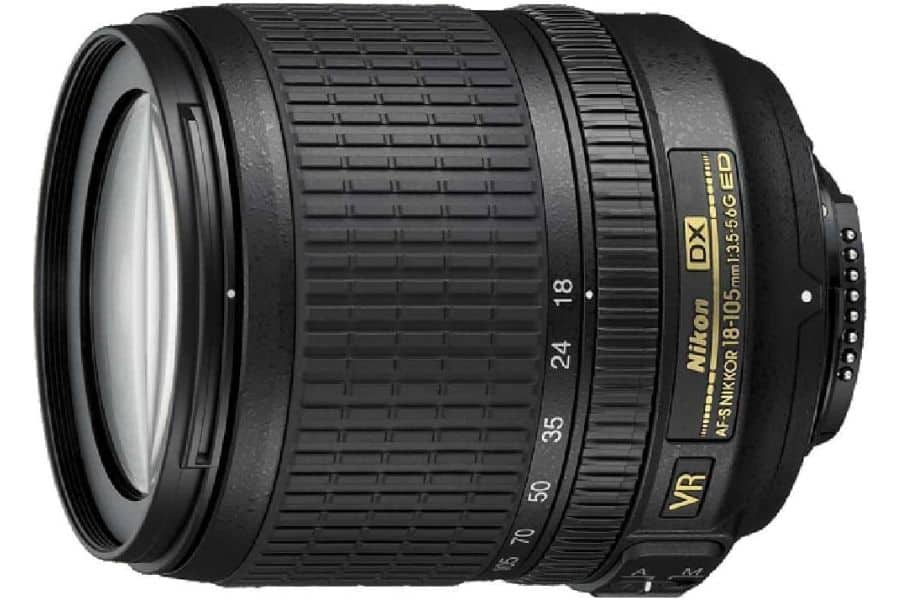
Price: Budget $
Best feature: Image stabilization
Dimensions: 76 x 89mm / 2.9 x 3.5in.
Weight: 420 g/14.8 oz.
The all-in-one lens is practical and has the same features as the previously mentioned Nikon lens, but here, the focal length is up to 105mm. It’s more lightweight than Nikon 18-200mm and a cheaper alternative.
Like the previous Nikon Zoom, it also offers image stabilization and a silent wave AF motor. Getting these from a very cheap lens is a huge win. Vibration Reduction (image stabilization) is a huge help when taking snaps on the go without the need to set up a tripod all the time.
An aperture of f/3.5 is also excellent for budget gear. It’s fast enough and works well if the lighting conditions aren’t the best. Even with Super Integrated Coating, it enables solid colors and reduced flare when the sun is bright.
With built-in autofocus and stabilization, this one offers you sharp photos from different focal lengths.
Macro lens
9. Nikon AF-S DX Micro-NIKKOR 40mm f/2.8G
PROS
- Very cheap
- Compact and lightweight
- Produces sharp and colorful photos
CONS
- 40mm isn’t good for microscopic subjects
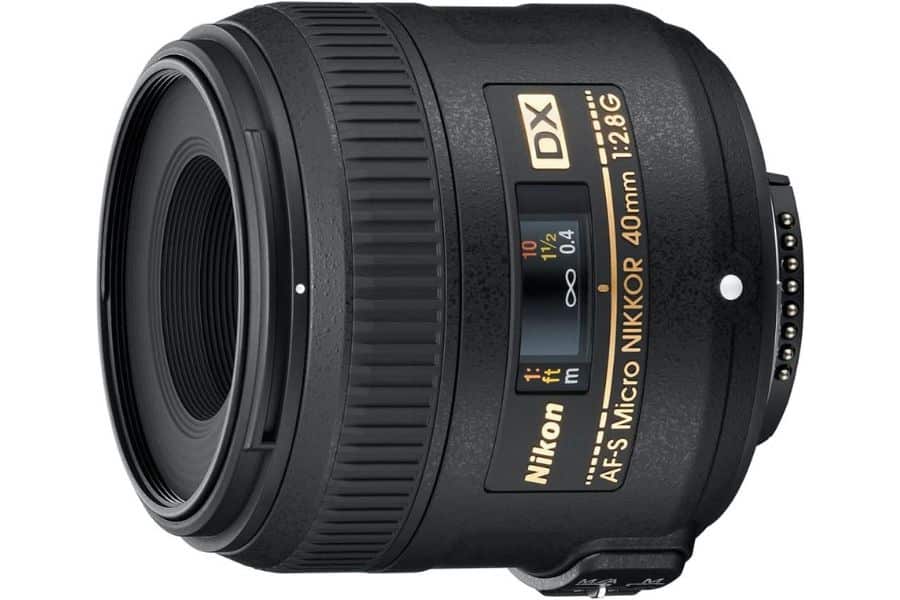
Price: Budget $
Best feature: Great sharpness from center to corners
Dimensions: 68.5 x 64.5mm / 2.7 x 2.5in.
Weight: 235g / 8.3oz.
That could be the best macro lens if you are into macro photography and have budget limitations. A small and lightweight tool for your camera is perfect for discovering new dimensions at the photography level.
Some features like autofocus and aperture of f/2.8 are great enough when considering the price. Again, it’s more likely a consumer-level lens for those experimenting with macro.
Also, it’s pretty standard that Nikon cameras have a Super Integrated Coating, suitable for sunny days to reduce flare and ghosting.
The only problem is probably a short focal length. If shooting living objects, you must take your camera very close to them. Another thing is that if you are too close to the object, the shadow might ruin the photo.
Overall, it’s perfect to shoot medium- to large-scale macro photography. For example, food photographers would benefit from this tool a lot.
Wildlife lens
10. Nikon AF-P DX NIKKOR 70-300mm f/4.5-6.3G ED
PROS
- Lightweight for a zoom
- Great price
- Fast-focusing
CONS
- It doesn’t perform well under low-light conditions
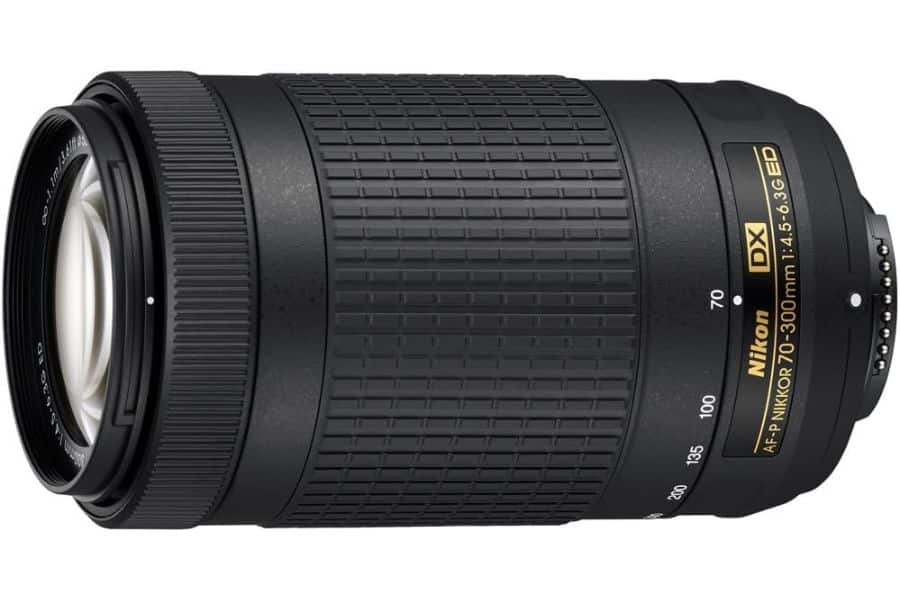
Price: Budget $
Best feature: Fast autofocus
Dimensions: 72 x 125mm / 2.8 x 4.9in.
Weight: 415g / 14.7oz
If you feel that you are more into wildlife photography but still not 100 percent sure, then this budget option might be the one for you.
Compared to other DSLR lenses, it’s a bit newer. Nikkor has upgraded its focus, which is also pretty fast for entry-level gear. If you look at the price range, then the quality of the photos is quite good.
The only downside can be a small aperture. Starting from f/4.5, it doesn’t rock under low light conditions and can limit the 300mm focal length. But it will perform well during the daylight and also during a bit darker hours when using a tripod.
A compact and lightweight tool is also perfect for a DSLR camera as it doesn’t add too much weight to carry around or shoot handheld. Like many other Nikkor lenses, it has built-in vibration reduction.
That will be the best wildlife lens when you don’t want to break the bank. It offers excellent sharp quality with a focal length of up to 300mm.
Prime Lens
11. Nikon AF-S DX NIKKOR 35mm f/1.8G
PROS
- Large aperture
- Fast autofocus
- Lightweight and compact design
CONS
- Doesn’t have image stabilization
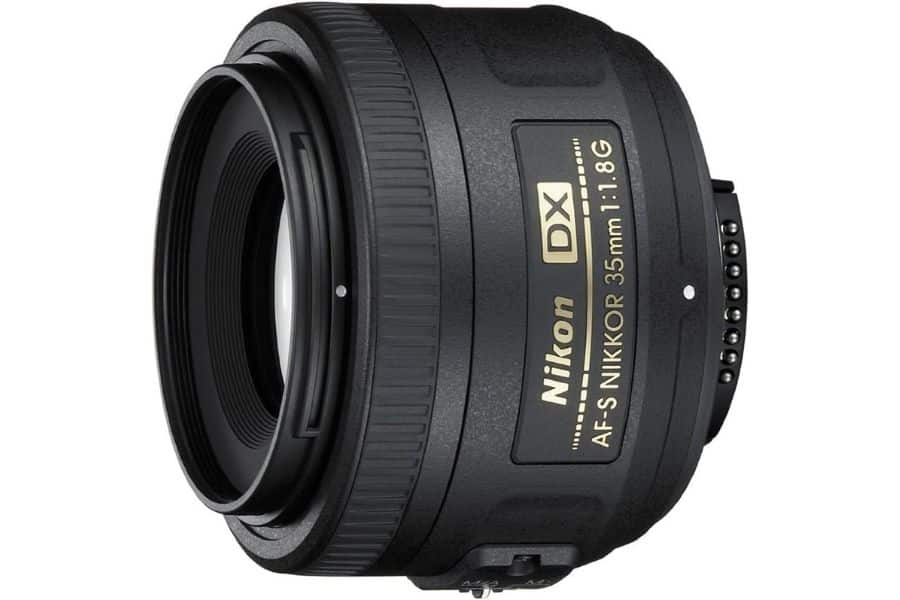
Price: Budget $
Best feature: Large aperture
Dimensions: 70 x 52.5mm / 2.8 x 2.1in.
Weight: 200g / 7oz.
Its lightweight, compact design and large aperture make it a popular choice for beginner photographers. As it has fast autofocus, it’s an easy choice for an additional lens to your gear.
The biggest feature of this is the maximum aperture of f/1.8. It performs well under low light without slowing down the shutter speed.
Fast autofocus and a silent wave motor are working well together. A silent and smooth focusing is excellent during the photoshoots. It’s mainly used in portrait photography, but it’s also used in general and travel photography.
A lightweight and compact design is also super helpful. That one has no vibration reduction, so you must keep your camera as steady as possible to avoid any camera shaking.
With a fixed focal length, it offers a large aperture and fast autofocus, perfect for the beginner portrait photographer.
Landscape Lens
12. Nikon AF-S DX NIKKOR 18-300mm f/3.5-6.3G ED
PROS
- Very versatile
- Reliable autofocus
- Built-in vibration reduction
CONS
- A bit too heavy
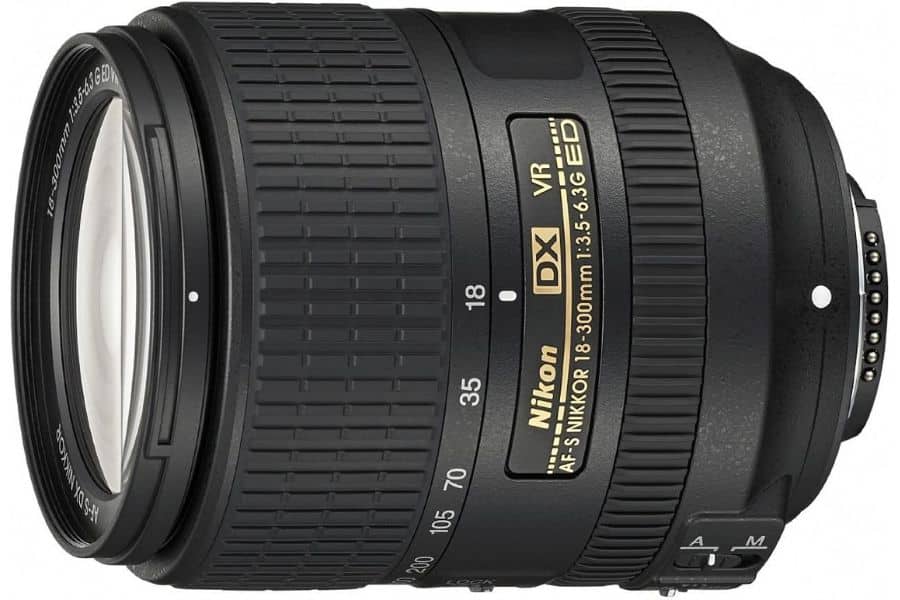
Price: Average $$
Best feature: Versatile all-in-one lens
Dimensions: 83 x 120mm / 3.3 x 4.7in.
Weight: 830g / 29.3oz.
From close-range shots to very far away objects is something that one-lens photographers would dream about.
This superzoom features autofocus, image stabilization, and a silent wave motor. Without these, it would be pretty complicated to shoot long-range photographs handheld, even more so when being a beginner in the field.
Even though it is a pretty heavy lens, it’s still primarily used for travel photography, as you only need one lens to shoot various types of photographs. Thanks to that you don’t need to change lenses, it’s a comfortable partner for your travel adventures.
Overall, the lens doesn’t perform perfectly in any photography form, from close-range shots to wildlife photography. Each type of photography has its lenses. However, if you are willing to use only one, then this all-in-one is something to try out to shoot any photographs.
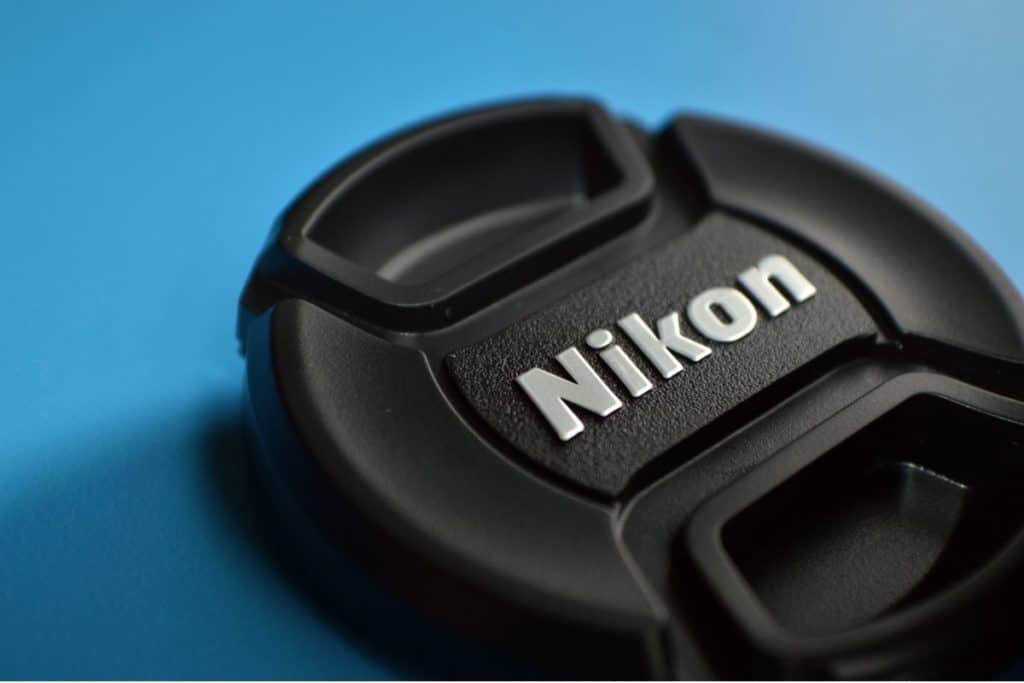
About the camera: Nikon D5600
Nikon D5600 is a DSLR camera that is most used by beginners eager to start with photography more seriously. It’s mostly known for features like a compact design, magnificent APS-C CMOS image sensor, and overall outstanding image quality.
As said, it’s more like an entry-level camera that offers loads of features and benefits essential for any level of photographer. A lightweight design, 24.2MP, 39 autofocus points, and Full HD video at 60fps are some things that a camera offers.
Some other useful features are vari angle touchscreen and built-in flash. A vari-angle touchscreen is a great addition when taking photos from different angles. For example, it’s essential when you are eager to do many self-shots. A built-in flash isn’t a top-notch feature, but it will be a big bonus when shooting without environmental lighting.
Overall, it’s a great investment for your first camera with many benefits and different lenses.
Some things to know before choosing the lens
First, the Nikon D5600 lenses can be mounted with the Nikon F (DX-format) type. Luckily, this mount type has many options, from wide-angle to telephoto zoom lenses.
Secondly, the downside of that broad lens option is that it’s hard to pick the right one. You need to know what you want to photograph. Do you want to shoot portraits, landscapes, close-range city environments, macros, wildlife, or something else? In that post, I categorized the best lenses for the Nikon D5600.
If you are unsure what to shoot, I recommend you pick a zoom lens. Something that hasn’t extremely wide focal lengths (superzooms from 18mm to 300mm), but something more that you can adjust at some distance. For example, from 24mm to 70mm. Then you wouldn’t lose any spark of the shooting performance. Here I have listed some superzooms because these are still popular and useful when traveling.
Focusing performance and image stabilization are among the most important things to look at when choosing a lens. It’s much easier to get sharp-quality photos if it has built-in autofocus and vibration reduction (or something similar).
Conclusion
Hopefully, you found good information and now know what lens to pick next. Changing a lens can upgrade your photography drastically, but remember to practice a lot. Happy photo shooting!
Read more: Best Nikon DX lenses.
PIN IT
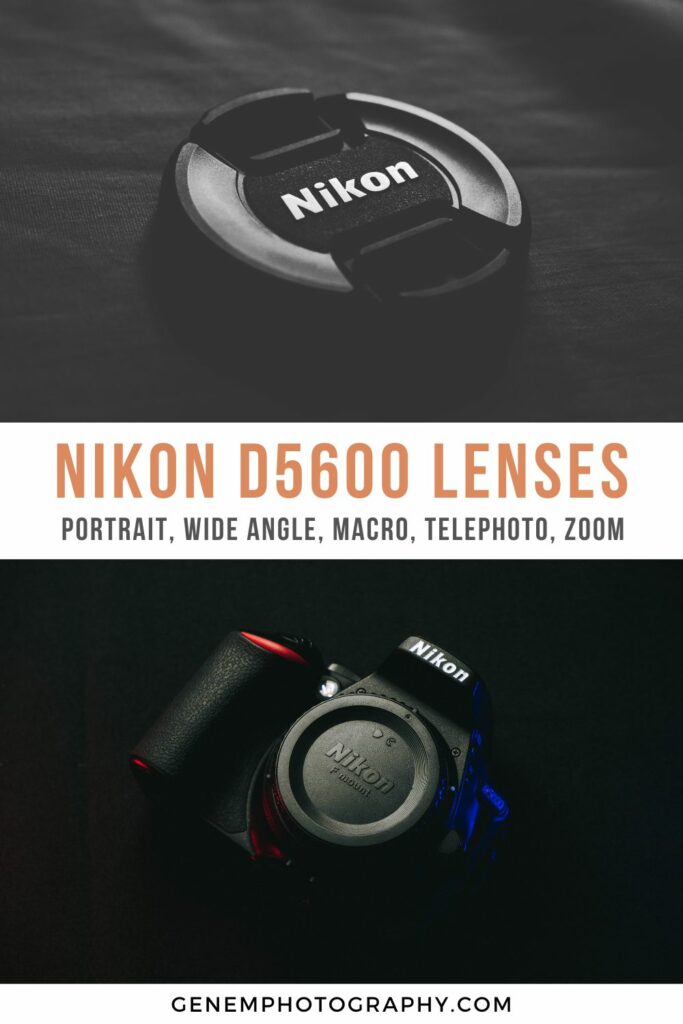

Recent posts about lenses:
